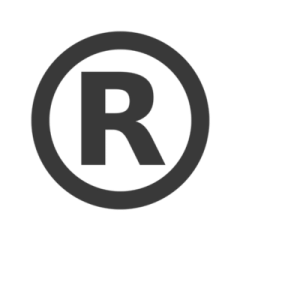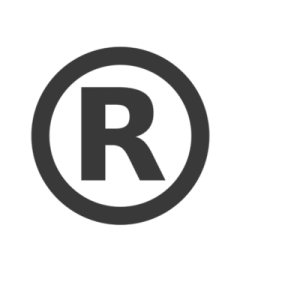Frequently Asked Questions about BUILT TO SAVE
Q. What is a BUILT TO SAVE home?
home?
A. A BUILT TO SAVE certified home is a new home that has been inspected and tested by a third-party RESNET home energy Rater during construction and after completion to verify that the high-performance BUILT TO SAVE® program requirements were met. A BUILT TO SAVE® home means homeowners will save more money on utilities compared to a similar home built to only to minimum code and will provide more comfort, tighter construction, and better indoor air.
Q. How is a BUILT TO SAVE home different?
home different?
A. In addition to the savings on utilities, a BUILT TO SAVE® home provides homeowners with a more comfortable living space with consistent temperatures throughout the home. To qualify for the BUILT TO SAVE® certification, a home must have tight construction, energy efficient windows, properly installed insulation, and properly-sized heating, cooling, and ventilation (HVAC) systems, and achieve an Energy Rating Index score of 63 or less, or be at least 5-10% more energy efficient than code.
Q. How do I know if the home I am buying is a BUILT TO SAVE certified home?
certified home?
A. Ask to see the BUILT TO SAVE® certificate, which is issued to the builder for the homebuyer. You can also check our Database of Certified Homes.
Q. Is a BUILT TO SAVE® home the same as an ENERGY STAR home?
home?
A. No. An ENERGY STAR® certification requires more extensive compliance with energy efficiency requirements than the BUILT TO SAVE® certification. If a home qualifies as an ENERGY STAR® home, it automatically qualifies for the BUILT TO SAVE® certification.
Q. Can my builder certify a home as BUILT TO SAVE at any time?
at any time?
A. No. A home can only be certified as BUILT TO SAVE® if the walls have not been put in place so that a pre-drywall inspection can be performed. Ideally, a home in the BUILT TO SAVE® certification process should be started at the planning stage before construction begins. A thorough review of the floorplans, elevations, and Manual J in the planning stage is critical to ensure that the home will meet the requirements of the program once it is completed.
Q. When is the BUILT TO SAVE certificate issued?
certificate issued?
A. The BUILT TO SAVE® certificate is only issued after the Rater submits the successfully completed checklists and photos of inspections and testing to the BUILT TO SAVE® program.
Q. How much does a BUILT TO SAVE certified home cost the builder?
certified home cost the builder?
A. The certificate includes a decal with whole-house systems information for the utility box panel as required by code. The fee for both the certificate and the decal is $205. The pre-drywall inspection and the final inspection fees are typically about $450 and are paid directly to the Rater. Builders must be BUILT TO SAVE® members, which requires a one-time annual fee of $150.
Q. How does a home qualify for BUILT TO SAVE certification?
certification?
A. To qualify for BUILT TO SAVE® certification, a home must have tight construction, energy efficient windows, properly installed insulation, and properly-sized heating, cooling, and ventilation (HVAC) systems, and achieve an Energy Rating Index score of 63 or less, or be at least 5-10% more energy efficient than code.
Q. What is an Energy Rating Index score?
A. An Energy Rating Index score (ERI) is the nationally recognized standard of measuring the energy efficiency performance of a home. The ERI has become the industry standard used to calculate and predict the home’s energy use. While energy consumption of a home will vary depending upon personal factors associated with the occupants and their habits, an ERI score is still a good indicator of energy consumption. The lower the ERI score, the more energy efficient the home. A BUILT TO SAVE® home must qualify with an ERI score of 63 or less or be at least 5-10% more energy efficient than code.
Q. How is the ERI score calculated?
A. To calculate a home’s ERI score, a certified RESNET Energy Rater does an energy rating on your home using specially designed software to analyze the projected energy use of the home based on the home’s construction plans. The rater works with the builder before construction to identify problem areas or improvements needed to ensure the house will achieve the lowest ERI score possible and meet the BUILT TO SAVE® requirements.
Q. What tests or inspections are performed by the Rater?
A. The Rater does an onsite inspection after the insulation is installed and before the drywall is applied to ensure proper installation and that there are no areas where air can escape between the attic and the interior spaces of the home. Upon completion of the home, the Rater will measure the air tightness of the home using a blower door test and a duct test to test the leakiness of the ducts. Results of these tests, along with data from software analysis, are used to generate a final Energy Rating Index score for the home and ensure that the home is in compliance with the BUILT TO SAVE® requirements.
Q. How do I know if my new home is energy efficient?
A. While most builders claim to build energy efficient homes, and while many do, the only way to be sure is to have verification by an independent third-party home energy Rater. If your home is certified as a BUILT TO SAVE® home, there is no question that it is energy efficient, and you will have the Energy Rating Index score to know its projected energy efficiency performance.

Comments are closed.